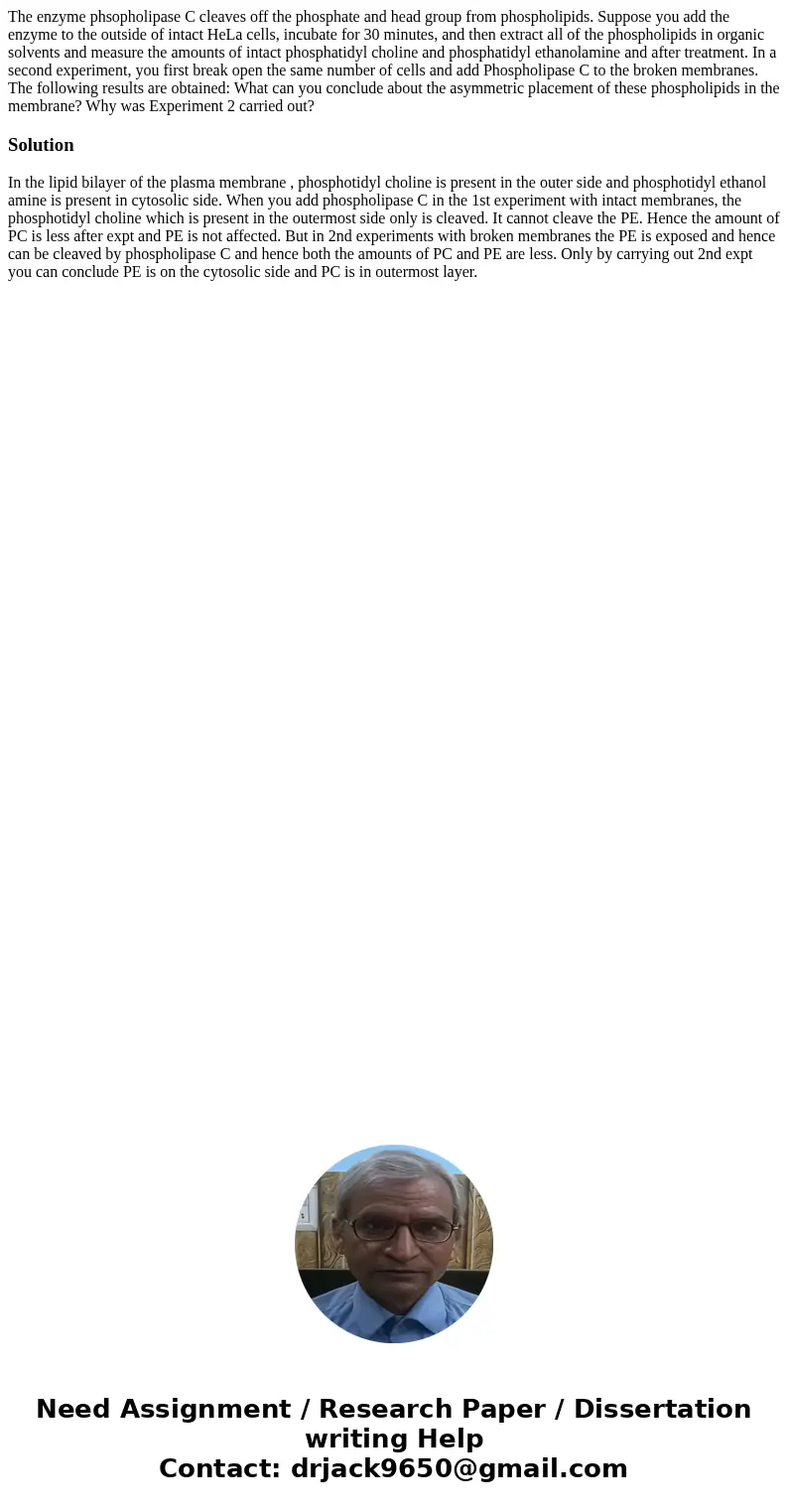The enzyme phsopholipase C cleaves off the phosphate and hea
The enzyme phsopholipase C cleaves off the phosphate and head group from phospholipids. Suppose you add the enzyme to the outside of intact HeLa cells, incubate for 30 minutes, and then extract all of the phospholipids in organic solvents and measure the amounts of intact phosphatidyl choline and phosphatidyl ethanolamine and after treatment. In a second experiment, you first break open the same number of cells and add Phospholipase C to the broken membranes. The following results are obtained: What can you conclude about the asymmetric placement of these phospholipids in the membrane? Why was Experiment 2 carried out?
Solution
In the lipid bilayer of the plasma membrane , phosphotidyl choline is present in the outer side and phosphotidyl ethanol amine is present in cytosolic side. When you add phospholipase C in the 1st experiment with intact membranes, the phosphotidyl choline which is present in the outermost side only is cleaved. It cannot cleave the PE. Hence the amount of PC is less after expt and PE is not affected. But in 2nd experiments with broken membranes the PE is exposed and hence can be cleaved by phospholipase C and hence both the amounts of PC and PE are less. Only by carrying out 2nd expt you can conclude PE is on the cytosolic side and PC is in outermost layer.
 Homework Sourse
Homework Sourse